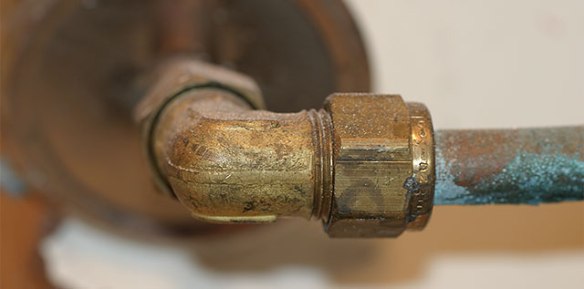How to Remove Limescale From Water
Distilled white vinegar is the most important household chemical when it comes to cleaning limescale. The best way to do this is to remove the fixture, whether it’s a showerhead, faucet, or anything else and soak them in vinegar for about an hour before giving them a thorough scrub.
How to Remove Limescale from Your Fixtures and Appliances

Fixtures: Put your household jug of distilled vinegar to good use by applying it to any limescale residue because this mildly acidic solution is one of the best ways to remove limescale. For the cleanest result, it is a good idea to completely remove all faucets, showerheads, drain plugs, etc. and soak them in a bucket of vinegar for about an hour. Once the hour is up, thoroughly scrub each fixture and wipe away the limescale.
If it is not possible to completely remove your fixtures, the next best thing is to fill a Ziploc bag with vinegar, place the “head” of the fixture where the buildup is visible into the liquid, and soak them this way. To keep the Ziploc bag in position, try using a large rubber band to secure it in place. Another option is soaking a towel in vinegar and leaving it on the problem area for at least an hour.
Appliances: Limescale can also take up residence in your appliances. If this occurs, the best solution is once again an acidic agent such as vinegar or even lemon juice. Try running vinegar or lemon juice through your washing machine or dishwasher like a detergent. Doing this will not only help remove limescale, but it will also help prevent it from forming. To tackle any limescale in your water heater, drain your tank a couple of times a year and/or you can lower the temperature so not as much calcium and magnesium build-up when heated.
Limescale Problems

Over time, the chalky white or green build-up of limestone surrounding your faucets can become difficult to remove if it is not regularly cleaned. This residue is a result of hard water (tap water) with added minerals like calcium carbonate, calcium, and magnesium. It is important to remove limescale, not only for the purposes of cleaning but also because it can pose a greater risk of permanently damaging your fixtures and pipes.
When residual water around your faucets evaporates, it leaves behind a crusty, unsightly limescale deposit. Limescale, if neglected, will build up and cause water pressure to diminish. This buildup will also cause bacterial growth in your drinking water so it is an important issue to address. Furthermore, this hard water deposit diminishes the shine of your water fixtures. Although limescale is a problematic mineral, there are things you can do to fight back.
Preventing Lime Scale

Unfortunately, wherever there is hard water, there is always a possibility for mineral buildup. If the buildup becomes excessive, the only lasting solution is a water softener. Installing a water softening system that runs throughout the entire home will counteract the damaging effects of hard water and can ultimately save your plumbing. This will not only keep your plumbing system cleaner and working more efficiently, but it will work wonders on your skin, hair, dishes, and clothes. A water softener will neutralize hard water and all the harsh minerals and chemicals found in this stream that causes limescale. So if limescale has become an issue this may be something to consider.
Recent Comments